Comprehensive Insights on DIG Irrigation Products
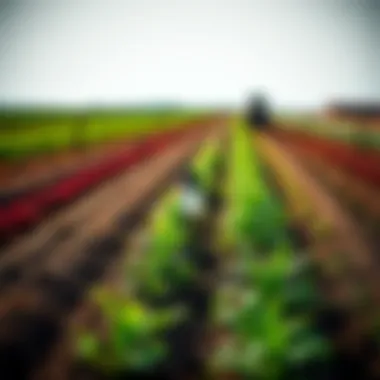

Intro
Irrigation is the lifeblood of modern agriculture. It's how farmers ensure their crops get the right amount of water, especially in areas where precipitation isn’t reliable. Among the many players in this field, DIG Corporation stands out for its innovative approach to irrigation technology. By focusing on sustainability and efficiency, DIG’s products cater to diverse agricultural needs, from backyard gardens to expansive farms.
As farmers and enthusiasts look for ways to optimize water usage, understanding the tools at their disposal becomes crucial. The growth of sustainable practices leads to better crop yields and allows for resource conservation, something all of us should care about in these times of climate change. Here, we take a closer look at DIG irrigation products, highlighting their design, functionality, and the positive impact they can have on agriculture.
Key Insights
Overview of the Topic
DIG irrigation products offer a robust solution for water management, combining durability with innovation. Their offerings range from drip irrigation systems to timers and controllers, each designed to help farms optimize water resources effectively. The beauty of DIG products lies in their adaptability; whether it’s a small garden or a large agricultural operation, there is a suitable solution available.
Importance in Agriculture/Horticulture/Agronomy
The significance of effective irrigation cannot be overstated. It is a fundamental component of agriculture and horticulture practice. By ensuring that crops receive consistent and adequate water, farmers can prevent issues like crop failure and soil degradation. It’s not just about growing healthy plants; it’s about preserving the environment and ensuring that farming can continue for generations.
"A well-managed irrigation system is like a gardener's best friend, helping crops flourish while being kind to the planet."
Sustainable Practices
Eco-Friendly Techniques
In a world where every drop counts, DIG promotes eco-friendly irrigation techniques that focus on conservation. Their drip systems target water delivery directly to plant roots, minimizing evaporation and runoff. This precise method not only saves water but also improves nutrient uptake by plants, making every droplet count.
Case Studies on Sustainability
Examining case studies gives us a closer look at the real-world impact of these irrigation systems. For instance, many California farmers have integrated DIG’s drip irrigation in their vineyards. As a result, these growers reported a significant reduction in water usage without compromising the quality of their grapes. Such success stories are pivotal in encouraging other farmers to adopt similar practices.
Tools & Resources
Essential Equipment and Technologies
Understanding the full range of DIG products can empower farmers to make informed choices. Some key tools to consider include:
- Drip Irrigation Kits: Ideal for vegetables and flowers, these kits offer complete setups for localized watering.
- Soil Moisture Sensors: Help determine when plants need water, preventing over or under-watering.
- Programmable Timers: Automating watering schedules can lead to remarkable water savings.
Recommended Books and Readings
For those keen on diving deeper into sustainable irrigation, the following resources can provide insightful knowledge:
- Irrigation: Design and Practice by Thomas H. McCaskey
- The United Nations Food & Agriculture Organization (FAO) provides various reports and guidelines on modern irrigation practices. Their website is a treasure trove of information on sustainable agricultural methods. Consider visiting fao.org.
By utilizing these tools and understanding the best practices available, farmers can not only improve their yields but also conserve precious water resources for the future.
Understanding DIG Irrigation
Irrigation has evolved from simple methods of watering crops to intricate systems designed to optimize water usage and enhance agricultural productivity. This section explores the array of DIG irrigation products, which have gained traction among farmers and agricultural enthusiasts alike. These products are not just tools; they represent a paradigm shift towards better resource management and sustainability in modern farming practices. Understanding how DIG products function allows users to make informed decisions, thus maximizing efficiency and yield.
History of DIG Products
DIG Corporation has come a long way since its inception. Established in the 1980s, the company aimed to fill a gap in the market for comprehensive irrigation solutions. Initially focusing on drip irrigation, DIG quickly expanded its offerings to include various types of sprinkler systems, timers, and pressure regulators. The company’s commitment to research and innovative design has resulted in reliable systems used across diverse agricultural settings, from commercial farming operations to small-scale gardens. The evolution of DIG products comes from understanding the needs of the end-user—farmers—and integrating feedback into product development, ensuring ongoing improvements and innovations. For example, when early drippers were prone to clogging, DIG introduced new materials and designs that addressed these issues, emphasizing durability alongside effectiveness.
Core Values and Mission
At the heart of DIG Corporation is a set of core values that shape its mission and operations. First and foremost is sustainability. The company emphasizes the responsible use of water resources, recognizing that in many parts of the world, water scarcity is a pressing concern. By promoting efficient irrigation practices, DIG aims to reduce water waste, which in turn supports healthier ecosystems.
Secondly, innovation is a key pillar for DIG. The company invests significantly in research and product development to offer cutting-edge solutions that meet the varying needs of customers. This includes using advanced materials for longevity, as well as creating smart irrigation controls that enhance user convenience while conserving water.
Lastly, DIG prioritizes customer support, believing that success in agriculture also depends on education and assistance. By providing comprehensive guides, tutorials, and responsive customer service, they ensure that users can optimize their irrigation systems effectively. In doing so, DIG aims not just to sell products, but to foster a community of informed growers focusing on sustainability and productivity in their agricultural practices.
“Sustainability is at the core of what we do; we strive to empower farmers with the tools they need to be efficient and responsible stewards of our precious water resources.” - DIG Corporation
Types of DIG Irrigation Products
Understanding the various types of DIG irrigation products is crucial for anyone involved in agriculture or gardening. The right products can make all the difference in water efficiency, crop yield, and even labor costs for farmers. With DIG’s comprehensive line, selecting the appropriate irrigation system aligns closely with the unique needs of each operation—be it large-scale farming or a backyard garden. \n\n### Drip Irrigation Systems
Drip irrigation is often hailed as the backbone of precision agriculture. This system delivers water directly to the roots of plants through a network of tubing and emitters. The benefits are clear—by minimizing evaporation and runoff, it conserves water while maximizing uptake. Many farmers have observed an increase in crop yield due to the targeted watering, which keeps the plants in their prime growing state. Additionally, customizability is a strong suit of DIG's drip systems; these can be tailored to fit varying crop types and topographies. One thing to keep in mind with drip systems is that they require an initial investment. However, with proper management, the water savings often cover these costs in no time.

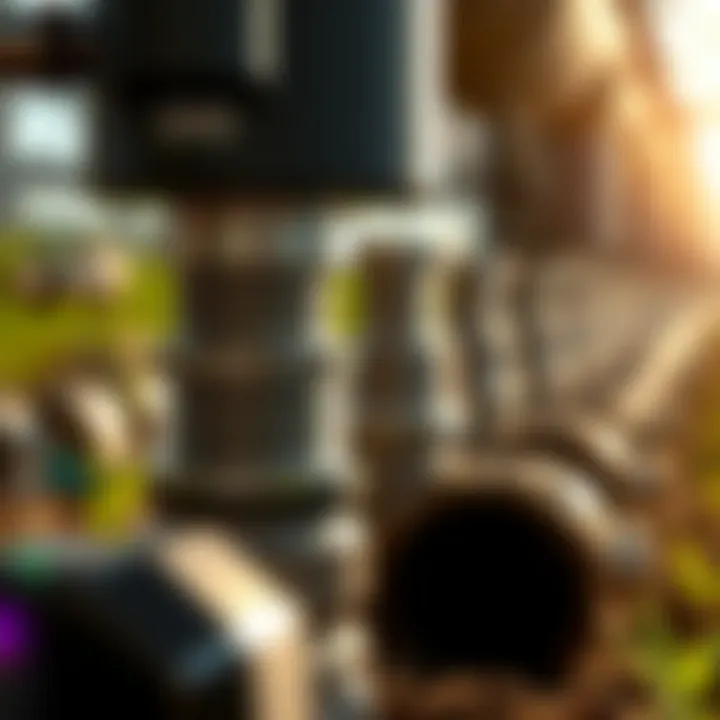
Sprinkler Systems
Sprinklers are another popular choice, particularly for larger plots of land. DIG offers a range of above-ground and underground sprinkler systems that create a full-circle spray pattern, ensuring even distribution of water. This method mimics natural rainfall, which many plants thrive on. The flexibility of sprinkler systems allows for covering vast areas without the need for continuous manual intervention. Plus, they can be highly efficient if combined with timers and pressure regulators. One caveat is to be cautious of water waste; wind can disperse water onto non-target areas. Thus, careful planning and placement of these systems are paramount.
Pressure Regulators
Pressure is often the unsung hero in the irrigation process. DIG’s pressure regulators are designed to maintain optimal flow rates, ensuring that all parts of the irrigation system function harmoniously. The importance here cannot be overstated; fluctuating water pressure can lead to inefficient watering and increased risk of system failure. Moreover, these regulators help in saving water while keeping plants adequately hydrated. Integrating pressure regulators into the setup not only promotes longevity in the irrigation equipment but significantly enhances the efficacy of water distribution, which ultimately leads to healthier crops.
Controllers and Timers
For a fully automated irrigation system, controllers and timers are invaluable tools. They allow farmers to set specific watering schedules, ensuring plants get consistent moisture without manual supervision. DIG’s controllers can be programmed for varied watering durations depending on the season or type of crops. This technology even enables remote access, which is a growing trend among tech-savvy farmers. Implementing these timers can help with not only routine watering but also with adjusting for unpredictable weather conditions or during peak growth times. Over time, farmers find that automation significantly lowers labor costs and optimizes water usage.
Understanding these components and choosing the right types of DIG irrigation products will set the foundation for successful agricultural practices. Each element has its unique advantages and fits particular scenarios, making it essential to analyze your needs carefully. Investing in tailored systems can lead to substantial long-term benefits.
Features of DIG Products
Understanding the features of DIG irrigation products is crucial for farmers and agriculture enthusiasts alike. These features not only showcase the quality and performance of the products but also highlight how they fit into the evolving landscape of modern irrigation practices. The qualities of durability, customization, and efficiency in resource usage are paramount, ensuring that growers can depend on their irrigation systems in diverse environmental conditions while maximizing benefits.
Durability and Materials
When it comes to irrigation systems, durability is non-negotiable. Farmers invest significant time and resources into their crops, and equipment that falters can cause considerable setbacks. DIG irrigation products are constructed using high-grade materials designed to withstand the rigors of outdoor environments.
- Robust plastic composites resist UV rays and won't crack under pressure, ensuring longevity.
- Metal components, where applicable, resist corrosion, common in damp irrigation settings.
- Products are designed to endure extreme weather conditions, whether it's a sizzling summer or a frigid winter.
It’s not just about building things tough, though. The manufacturing process also considers environmental impact and sustainability, reflecting a commitment to both quality and ecological responsibility. As the saying goes, "You get what you pay for," and opting for durable irrigation products often pays off in resilience over the long haul.
Customization Options
Every farm is unique, and a one-size-fits-all approach to irrigation rarely works. That's where DIG’s customization options shine. Farmers can tailor their systems according to the specific needs of their crops and land.
- Modular setups allow users to start small and expand as the business grows, facilitating scalability.
- Various attachments and fittings let users adjust flow rates and coverage areas for optimal irrigation.
- Custom configurations mean that growers can integrate different types of irrigation systems—such as drip and sprinkler—into one cohesive design, providing flexibility to address diverse agricultural practices.
These options create a personalized irrigation experience that not only caters to the immediate needs but also adapts to future changes, making the investment in DIG products worthwhile.
Efficiency in Water Usage
Water is a precious resource, especially in agriculture where every drop counts. DIG irrigation products are engineered with efficiency at their core. These systems aim to minimize waste and maximize output, which is essential for sustainable farming practices today.
- Drip systems, for instance, deliver water directly to the root zones, drastically reducing evaporation and runoff.
- Smart controllers and timers optimize watering schedules based on plant needs and weather conditions, ensuring water is used efficiently.
- Featuring pressure regulators helps maintain consistent water flow, preventing wastage from fluctuations in water supply.
Investing in efficient irrigation isn’t just good for crops; it's also increasingly becoming a regulatory requirement in many regions, as governments encourage sustainable agricultural practices. Embracing these technologies positions farmers not only as good stewards of the land but also as proactive players in the growing dialogue about resource conservation.
Efficient water usage is not just about saving costs; it's about sustaining the future. Through careful management, DIG irrigation products help farmers navigate the delicate balance between productivity and sustainability.
Benefits of Using DIG Irrigation Products
When it comes to efficient farming practices, understanding the benefits of incorporating DIG irrigation products into your agricultural strategy is indispensable. These tools don't just help in watering crops; they redefine the way resources are utilized in agriculture. Let's unravel the specific benefits that keep farmers and gardening enthusiasts turning to these products.
Enhanced Crop Yield
Integrating DIG irrigation solutions can significantly amplify crop yields. This is not merely a matter of watering your plants but rather providing them with the consistent moisture they require. Crop growth depends heavily on water availability; a steady supply promotes healthier plants that yield more fruit and vegetables.
Farmers using DIG's drip irrigation systems note that crops like tomatoes, peppers, and flowers have thrived under these precise conditions. Rather than relying on traditional flood irrigation, which can lead to excess runoff and uneven soil saturation, drip irrigation delivers water directly to the plant roots, ensuring they get what they need without waste.
Moreover, continuous moisture reduces stress on plants, especially during drought conditions, enhancing resilience and leading to a more bountiful harvest. Consequently, the return on investment indirectly increases through higher productivity levels, which is a significant advantage in the competitive agricultural arena.
Lower Water Consumption
Water scarcity is becoming more pronounced, and every drop counts. One of the most remarkable aspects of DIG irrigation technology is its capacity to minimize water consumption. With the help of efficient drip lines, farmers can use 30 to 50 percent less water compared to traditional methods. This not only conserves a precious resource but also leads to lower utility bills.
For instance, a farmer in California switched to DIG’s systems and reported a reduction in water usage that allowed him to allocate resources elsewhere, like soil amendments or pest management. It’s worth noting that when crops are irrigated judiciously, this also contributes to preventing soil erosion and nutrient leaching.
"Caring for the earth while maximizing productivity is our most important task as farmers."
- Anonymous Farmer
This sustainable approach to irrigation doesn’t just foster crops' growth; it plays a role in environmental stewardship, aligning agricultural practices with modern sustainability goals.
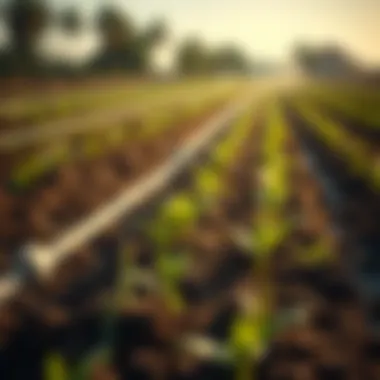
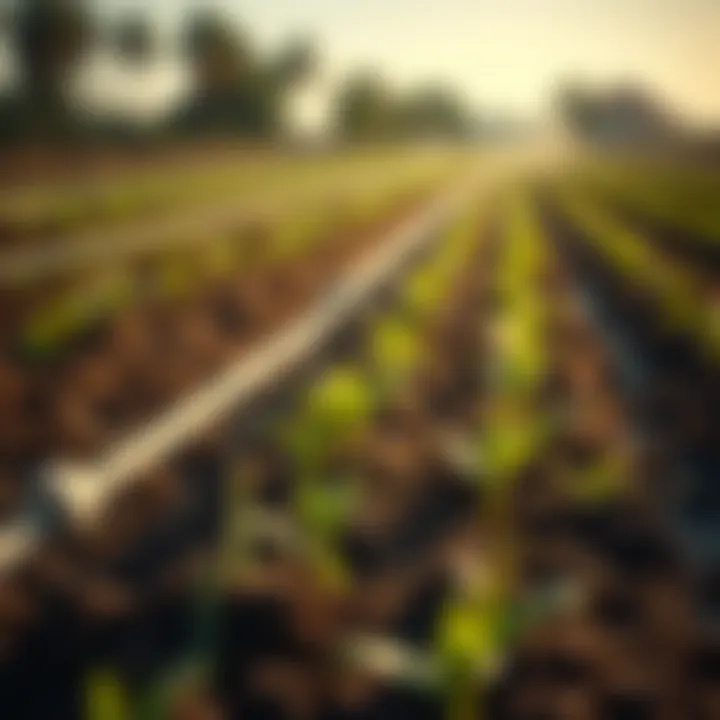
Reduction in Labor Costs
Labor costs in agriculture can eat into profits faster than one can say "drought-resistant." Here, DIG's irrigation products can take a substantial bite out of those expenses. Automated systems, such as controllers and timers provided by DIG, free up farmers from the continual task of watering and maintaining irrigation systems manually. Instead of having to manually turn on hoses or switch valves, these automated solutions ensure that watering schedules are executed efficiently and accurately.
As a direct result, labor requirements can be trimmed down, allowing farmers to allocate their human resources towards more strategic activities like soil health management or pest control. For example, a local organic farm implemented DIG controllers, noticing an increase in labor efficiency and a decrease in overtime hours, which in turn enhanced their margin for profit. Ordinarily, even small savings in labor costs can contribute significantly to a farm’s bottom line, enabling reinvestment into other areas of need.
By deploying DIG irrigation products, farmers stand to benefit not only from improved yields and reduced water usage but also from the economic advantages that come with decreased labor requirements. Choosing such products isn’t just good for your crops; it’s good for your wallet as well.
Integration with Sustainable Practices
Sustainable practices in agriculture hold significant weight today as we strive for a balance between efficiency and ecological responsibility. This is where DIG irrigation products come into play. By focusing on sustainable irrigation solutions, these products not only enhance farming productivity but also align closely with global conservation efforts.
Alignment with Conservation Efforts
The linkage between DIG irrigation products and conservation is evident in various dimensions. Agriculture is known to consume a substantial volume of freshwater. Therefore, employing efficient irrigation systems that conserve water can help mitigate environmental impacts. Water-saving features in DIG systems, like pressure-regulated drip lines, enable farmers to water crops with precision, significantly reducing water waste.
- Adopting such practices helps to:
- Minimize the over-extraction of water sources.
- Conserve soil health over time, ensuring the land remains productive for generations.
- Foster biodiversity through the responsible use of resources.
Farmers using DIG's advanced technologies can cycle through their irrigation schedules smarter than ever. This proactive approach towards conservation not only supports plant health but can also generate an overarching positive effect on local ecosystems and watershed management.
Eco-Friendly Product Design
The manufacturing process of DIG products underscores a commitment to sustainability. Each product is designed with eco-conscious materials, ensuring that the environmental footprint of production is kept at bay. The focus is not only on performance but also on the longevity of the products.
DIG employs recyclable materials where possible, and they emphasize durability to resist wear and tear longer than your typical irrigation components. Aspects such as:
- BPA-free plastic: to ensure that harmful chemicals do not leach into the soil or water supply.
- Low-energy components: in controllers and timers to reduce electricity consumption.
This focus on eco-friendly product design means farmers and enthusiasts can confidently invest in irrigation systems that are designed to last while minimizing their impact on the environment. So when you opt for DIG, you're not just selecting equipment; you're investing in the future of sustainable agriculture.
"Sustainable irrigation practices not only preserve our vital water resources but ensure we can grow food responsibly for future generations."
Case Studies: Successful Implementation
Case studies are powerful tools that showcase real-world applications and successful uses of products. In the context of DIG irrigation products, examining these case studies provides valuable insights into how these systems perform in practical settings. The experiences and outcomes documented in these studies reinforce the effectiveness of DIG products, illustrating their impact on agricultural efficiency and sustainability.
By analyzing specific situations where DIG irrigation systems have been implemented, prospective users can grasp the tangible benefits these products offer. Moreover, these case studies demonstrate the adaptability of the systems to various scales of agriculture, from large commercial operations to home gardens. As such, they serve as compelling evidence for the credibility and reliability of DIG irrigation technologies.
Commercial Agricultural Use
In commercial farming, where maximizing yield and optimizing resource usage are key, the application of DIG products has shown significant advantages. For instance, a tomato grower in California adopted DIG's drip irrigation system to irrigate a vast field. Prior to installing this system, the grower faced challenges like uneven water distribution resulting in patchy crop health and overwatering in some zones.
After implementing a strategically designed drip system, water was delivered directly to the root zones, allowing for precise control over moisture levels. The transformation was remarkable. The grower reported a 30% increase in yield, with healthier plants and better fruit quality.
- Key Factors in Success:
- Micro-irrigation technology tailored for crops.
- Soil moisture sensors that provide real-time data.
- Regular maintenance practices that keep the system optimally running.
This experience illustrates how targeted irrigation can drastically improve productivity and quality, offering a strong argument for other commercial growers considering similar systems.
Home Garden Experiences
On a smaller scale, home gardeners have also experienced the benefits of DIG irrigation products. Take the example of an urban gardener in Florida who turned a bare patch of land into a vibrant vegetable garden. Using DIG's flexible micro-spray system suited for tight spaces, the gardener was able to create efficient irrigation settings that prevent water waste.
The results were nothing short of impressive. Over a single growing season, the gardener doubled the vegetable harvest while maintaining lower water bills. Here’s how:
- Smart Sprinkler Timers allowed for precise scheduling based on weather conditions.
- Tailored drip lines ensured that each plant received the right amount of water directly.
- User-friendly design made it easy to adjust settings without prior irrigation knowledge.
The gardener noted, “With DIG's system, I’ve not only saved water but also reduced my gardening labor. I can enjoy more time watching my garden flourish.” This illustrates that efficient irrigation is not just for farms; it enhances urban gardening as well.
"Efficient irrigation leads to sustainable practices and enhances productivity, no matter the scale."
Through these real-world illustrations, it becomes clear that DIG irrigation products are not just functional—they’re effective tools for improving crop yields and water efficiency in diverse agricultural landscapes.
Challenges in Irrigation
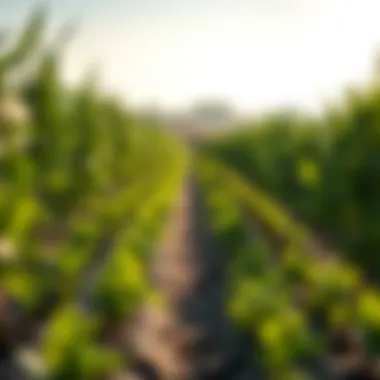

Irrigation plays a crucial role in successful agriculture, yet it is not without its challenges. Farmers and enthusiasts often encounter various hurdles that can affect the efficiency of their irrigation systems, particularly when using products like those from DIG. Addressing these challenges becomes essential not just for maximizing crop yield but also for conserving valuable resources. In this section, we’ll take a closer look at some of the most common troubles faced by users of drip systems and sprinkler systems.
Common Issues with Drip Systems
Drip irrigation systems are considered an efficient way to deliver water directly to the plant roots, but they are not foolproof. Farmers and gardeners frequently report several key issues:
- Clogged Emitters: One of the most prevalent problems encountered in drip systems is emitter clogging. This often occurs due to sediment in the water supply or excessive algae growth. Regular maintenance and filtration systems can help mitigate this issue.
- Inconsistent Water Distribution: Sometimes, uneven water distribution leads to certain areas of the garden being overwatered while others are left too dry. This situation can create patchy growth, which isn't ideal for crops.
- Difficult Setup: For beginners, setting up a drip irrigation system can be a nasty puzzle to figure out. The myriad of components involved can overwhelm those unfamiliar with the technology.
Considering these issues, users need to implement regular maintenance routines and choosing quality components can often alleviate many of these frustrations.
"Preventive maintenance is less costly than repairs."
Limitations of Sprinklers
Sprinkler systems are another popular irrigation choice, praised for their ease of use, yet they come with their own set of limitations:
- Water Waste: Unlike drip systems, sprinkler systems can lead to significant water loss due to evaporation and runoff. Especially in windy conditions, a good amount of water can be blown away before it even reaches the plants.
- Coverage Issues: Not all areas of a farm or garden may receive the same water coverage, leading to dry spots that can adversely affect crop growth. In larger fields, this can become particularly problematic and necessitate additional equipment or manual intervention.
- Dependency on Weather Conditions: Sprinkler irrigation is heavily influenced by external weather factors. Rain or wind can make their efficiency fluctuate, putting crops at risk if farmers don’t adjust their schedules accordingly.
Understanding and acknowledging these challenges provide critical insight for users of DIG irrigation products. By being aware of potential pitfalls, farmers can make informed decisions when selecting the right system and ensuring its proper maintenance and operation.
Choosing the Right DIG Products
Selecting the appropriate DIG irrigation products can significantly shape the success of your agricultural endeavors. A well-considered choice goes beyond mere brand loyalty or price tag; it’s about strategically enhancing water delivery and efficiency tailored to your specific needs. By assessing various elements that come into play, you ensure not only the sustainability of your agricultural practice but also potentially higher yields and minimized costs.
Assessing Irrigation Needs
Understanding your unique irrigation needs is the cornerstone of making the right choice. Before you jump into selecting products, take a step back and evaluate several factors:
- Crop Type: Different crops have varying water requirements. For instance, leafy greens may thrive with a finer dripper, while larger vegetable plants may need more substantial water flow.
- Soil Type: The moisture retention capability of your soil can dictate the irrigation method. Sandy soils drain quickly and might benefit from a more frequent watering regime.
- Field Size and Layout: The structure of your field—square or irregular—also plays into whether a drip or a sprinkler system suits you better. A tailored setup can minimize water waste.
By clearly grasping these aspects, you can match your needs with the corresponding DIG irrigation product. For example, if you're working with a vast area featuring diverse crops, a combination of drip systems for water-intensive plants paired with sprinkler systems for others might serve well.
Budget Considerations
Budgeting is crucial when choosing the right products, but it shouldn't solely determine your options. While it's tempting to opt for the least expensive option available, consider long-term growth and costs associated with maintenance. A seemingly pricier product may offer durability and efficiency, ultimately saving you money in repairs and water waste.
To manage expenses effectively:
- Invest in Quality: Prioritize products known for their longevity, even if it means higher upfront costs. For example, DIG’s pressure regulators are designed to withstand the elements, ensuring reliable function without frequent replacements.
- Calculator for Cost: Employ tools or calculators, which many manufacturers offer online, to gauge the total cost of ownership, including installation and ongoing operational expenses.
- Look for Discounts: Watch for seasonal promotions or bulk-buy deals that can help you stretch your budget further.
Support and Installation Services
Having the right support can take the bit of worry out of the installation process, especially if you're not handy with DIY tasks. DIG provides various resources to assist users in establishing their irrigation systems:
- Installation Guides: Detailed manuals and video tutorials can walk you through the entire setup process, making it seem less daunting.
- Customer Support: Don't underestimate the value of reliable customer service. Check if DIG offers dedicated support channels where you can ask product-specific questions.
- Local Experts: And if you're unsure how to proceed, consider enlisting the help of local irrigation professionals familiar with DIG products. They can provide vital on-the-ground insights, ensuring a smooth installation.
Closure of Choosing the Right Products
Future Trends in Irrigation Technology
As the agricultural sector adapts to changing global conditions, embracing new methodologies and technologies is more crucial than ever. Future trends in irrigation technology are not merely innovations; they are essential frameworks guiding how farmers will conserve resources, optimize crop yield, and meet the growing food demands of the population. This section delves into where irrigation technology is heading, emphasizing smart solutions and the integration of the Internet of Things (IoT) within agriculture, both of which hold the promise of revolutionizing traditional practices.
Smart Irrigation Solutions
In the contemporary irrigation landscape, smart solutions are emerging like a phoenix from the ashes of outdated techniques. These innovations leverage data-driven insights to automate irrigation processes, ensuring crops receive the optimal amount of water at precisely the right times. With these systems, farmers can monitor soil moisture levels in real-time and adjust watering schedules based on climatic conditions.
Benefits are rife here:
- Resource Efficiency: Smart systems minimize water wastage, aligning with global sustainability targets.
- Automation: Farmers can reduce their time spent on manual irrigation management, enabling them to focus on other important tasks.
- Cost Savings: Fewer resources wasted translate into lower water bills and operational costs in the long run.
Imagine using a simple mobile app to adjust irrigation schedules while sitting down for a coffee! It’s a reality that smart irrigation solutions make possible.
"Incorporating technology into agriculture is not just about modernizing; it’s about survival in an increasingly resource-strapped environment."
Integration of IoT in Agriculture
Integration of IoT in agriculture is a game-changer, representing a paradigm shift from conventional farming to a more interconnected and efficient ecosystem. Sensors planted in the fields monitor variables like temperature, humidity, and moisture levels, feeding that data back to centralized systems or cloud platforms for analysis. Farmers can then receive alerts and insights tailored to their specific circumstances.
This melding of technology and agriculture brings various advantages:
- Data-Driven Decisions: With reliable data, farmers can make specific interventions to improve crop health and yield.
- Predictive Analytics: IoT systems can help forecast irrigation needs based on historical data, thereby enhancing planning processes.
- Enhanced Crop Monitoring: Farmers can keep a close eye on crops and respond immediately to any potential threat, such as pest infestations or disease.
As this technology advances, the agricultural sector stands at the brink of transformation, offering tools that make farming not only smarter but also more sustainable.







